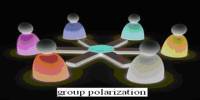Years of cognitive development research have yielded a wealth of information about what children require to grow, thrive, and learn, but it is also critical to translate those insights into real-world applications.
A new paper co-authored by Penn State graduates Brenna Hassinger-Das, now an assistant professor of psychology at Pace University-NYC, and Jennifer Zosh, professor of human development and family studies at Penn State Brandywine, investigates the science-backed core pillars of learning and examples of play spaces that incorporate them.
“We know that children in Western countries spend only 20% of their time at school; where are they for the other 80%?” According to Hassinger-Das. “They could be at home, the grocery store, or the park. How can we transform these everyday spaces to promote playful learning and conversations between caregivers and children? We wanted to make the most of these spaces by transforming them into places that are both enjoyable and conducive to the type of learning that occurs in the classroom.”
Previous research has discovered six core characteristics or “pillars” of learning that can maximize any experience a child has, whether it’s playing in the park, going to the grocery store, or using a smartphone app, according to the researchers. These pillars advocate for experiences that are active rather than passive, engaging, meaningful, socially interactive, iterative rather than repetitive, and joyful.
A new study explores the science-backed core pillars of learning and examples of play spaces that incorporate them, and the researchers give tips for parents to use them at home.
“We wanted to use research insights to help support children, families, and communities,” Zosh explained. “We wanted to see how we could take those pillars and apply them to communities in playful ways that support children’s learning for this specific initiative.”
The paper, which was recently published in the journal Trends in Cognitive Sciences, looked at several examples of spaces that used pillars in their design.
Urban Thinkscape, for example, is an installation that transformed a bus stop into a playful learning space that encourages play and conversation. One of the elements included was a feature called Stories, which consists of several icons placed on the ground with various pictures that can be used to tell stories. According to the researchers, as children move from icon to icon and construct a story, they develop narrative skills, which are an important component of literacy.
Despite the fact that the paper focused on public spaces that included these elements, the researchers stated that anyone, including parents at home, can use the pillars to improve children’s play spaces and experiences.

Pillar One: Active
Maintain your “activity” while playing and interacting with your child, for example, by incorporating literary and STEM elements into your speech and interactions.
According to Zosh, this could include counting the apples in your grocery cart aloud or asking your child what letter each block begins with as you build a tower. She also mentioned that asking a lot of questions, such as “What would happen if we mixed these blue and yellow paints together?” or “What would happen if we stacked the red square block on top of the yellow triangle block?” can be beneficial.
Pillar Two: Engaged
“Try to limit distractions as much as possible, such as background television and smartphone use,” Hassinger-Das advised. “These types of distractions are sometimes unavoidable, but they have the potential to detract from your child’s quality time. During play, staying focused and engaged can help you make the most of these interactions.”
Pillar Three: Meaningful
During play, try expanding on topics that the child is already interested in. If they are interested in dinosaurs, you could set up a pretend scenario in which you dig for dinosaur fossils at the playground. Alternatively, you can incorporate dinosaur information such as how many bones they had and what they ate.
“If you’re reading a book set in another state, get out a globe or a map app and explore where the state is and how the weather differs from where you live,” Zosh advised. “Assisting children in making connections allows them to weave together a rich world of understanding.”
Pillar Four: Socially interactive
According to the researchers, you should let your child lead during playtime while providing support along the way. Allow your child to choose what to build with blocks, for example, while asking questions such as, “What would happen if you placed that block in a different direction?” or “How many more blocks do you think it would take to build a tower as tall as you?”
Pillar Five: Iterative
Children are inherently scientific thinkers; they enjoy experimenting, seeing what happens, and trying again and again until something works. The researchers recommended allowing your children to guess what will happen, conduct “experiments,” make up new words to favorite songs and make mistakes. Every blunder is an opportunity to learn.
Pillar Six: Joyful
Finally, there are numerous ways to make playtime more enjoyable, including incorporating elements of surprise. “One way to foster surprise and joy is to play with shadows and ask which one is bigger or how you can make your shadow grow or shrink,” Hassinger-Das said. “Think about what helps your child connect with whatever brings them joy, from building with a cardboard box to pretending to be a vet with their stuffed animals.”
















